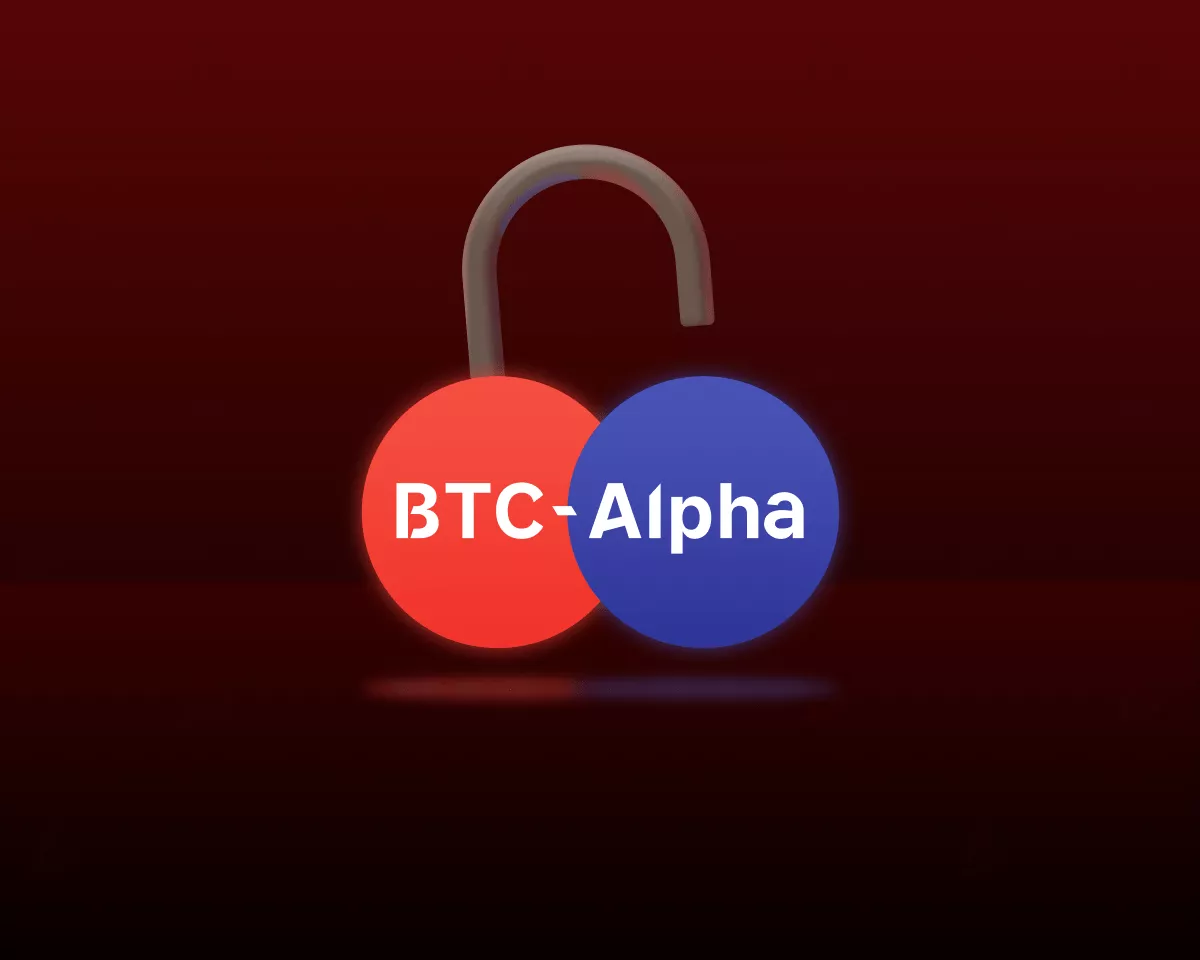“The music has stopped,” The New York Times announced last week. The paper of record explained: “A global industry worth hundreds of billions of dollars rose up practically overnight. Now it is crashing down.” The industry in question — web3 — has lost an estimated 65% (or more) of its value in a matter of weeks.
For serious builders — now and in the past — “crashes” are great times to build. Label this moment in web3 an “Ice Age.” It’s not the first Ice Age in speculative technology, and it won’t be the last. These frigid eras present an unusually fertile and rewarding climate to launch new ventures.
Let’s explore!
A Historical Cycle: market crash and the dawn of new eras
In mid-April 2000, the tech-heavy NASDAQ fell by 25% percent. It marked the unwinding of an era, which some call web1. By October 2002, the NASDAQ had fallen to a low: Tech stocks had given up $5 trillion, or 78% of their value, from their peak. This was the “Dot-Com Crash.”
The Dot-Com era had been fertile — over $100 billion of venture money had financed the commercialization of the internet. Lessons were learned. Some of these were confounding, such as the mantra of the 1990s: “Information wants to be free.”
Amidst the rubble of the collapse, a few young companies survived, including Amazon, Netflix and Google among them. A few new companies were formed; YouTube and Facebook, and MySpace. By 2006 a new business model had emerged; as the LA Times explained back then to readers, “Now, the focus is more on free services supported by online advertising, which has been growing sharply.”
The venture investors who stuck through the crash embraced this controversial new model. If “information wants to be free,” then perhaps the business model is really a media model; use advanced technology to build compelling consumer products, allow them to be used for free, and use the rich trove of behavioral data to matchmake effectively between advertisers and consumers. Users would pay for the service, not with money but indirectly with their data. This became a bedrock of what we now call web2 and the economic engine behind a dizzying array of tech companies, most notably Facebook and Google.
Buried beneath this free-tech-as-media model was a simple assertion: people would do work for a service if motivated properly. This insight extended to the second wave of web2 innovation and what became known as the “gig economy.” Companies like Uber emerged. Drivers and riders embraced the innovation; Uber was merely a “marketplace” and a “matchmaker between drivers and riders,” taking a cut along the way.
The gig model was another dizzying success.
However, a throughline connected all the web2 winners. Whether they were gig platforms, eCommerce platforms, social networks, or search engines, they could never, ever become an owner of the network. They could be a customer or a “partner driver,” but under no circumstances could their work translate into ownership in the platform. An hourly wage? Perhaps. A commission? Sure. But “vested interest in the enterprise?” Absolutely not. This rarefied position was limited to the “founding team,” the “investors,” and perhaps clutches of employees with stock options that were relatively hard to execute.
Arguably, this position held by the platforms made rational sense. The founders built the data systems, the algorithms, the branding and marketing. They raised the capital, so why should “users” become owners? After all, the users had no role in the hard work of conception and launch. They weren’t even investors. Users were ends, not means.
Web2 — Hidden Costs
What seemed like a fair tradeoff started to get rattled in 2015. This marked the rise of a growing backlash, “You are the product” and “Program or be programmed.” There was a sense that too much had been given away to these companies. The exchange had become imbalanced. The seemingly harmless, friendly platforms- Facebook, Insta or YouTube, began to take on a darker tone. People spoke about “social media addiction,” the “loss of privacy,” and later “the rise of disinformation”, “troll farms,” and on and on. Climate scientists might call these the “externalities” — the hidden costs — of the web2 business model.
These companies had gotten so big-hitting dizzying market caps, breaching the trillion-dollar mark in some cases, an unfathomable sum bigger than the GDP of many nations, that there was a sense of powerlessness. Were we destined to live, forever, in the controlled precinct of unaccountable, unelected, ungovernable tech companies answering to no one apart from putative investors on public markets? Realistically, could anything new overtake Google or Facebook at this point?
Decentralization — a solution to web2 shortcomings?
In 2009 a project was launched called “Bitcoin.” It sounded like a pretty stupid, strange, and quirky idea of minimal interest to 99% of people. Some kind of “digital currency.” Like the coin in a game. Whatever.
But underneath Bitcoin was an innovation that struck at the heart of how web2 companies had been built. At least in theory. The designers of Bitcoin wanted to solve a core problem: how could you allow for trusted transactions without a trusted central authority in the middle? An interesting question with profound implications if an answer could be found.
Bitcoin started as a kind of game. The designers made several promises:
- There would never be more than 21 million Bitcoins created.
- Each Bitcoin would be unique and uncopyable- meaning it can’t be counterfeited.
- The creation of new Bitcoins would correlate to the “work” done by the community- they’d have to be “mined.” And that would get harder over time, effectively rewarding the early workers more than the later ones.
- And all of this would be controlled by a distributed network, with no central authority that could be, nonetheless, trusted to make the right determinations.
Insanely enough, these promises held true. People tried (for fun, after all, this began as a kind of “LARP”) to prove these three promises could be broken. But they held fast.
Because they held fast, remarkable stories emerged. The price of Bitcoins started to rise. Early LARPers who’d bought Bitcoin for fun and games (and maybe pizza) now discovered their coins were worth thousands of dollars, then millions. Some of them freaked out, realizing they’d tossed their Bitcoin “wallets” into the trash and from there to the town dump. Would the town be so kind as to spend a small fortune to dig out the dump in search of a small drive? We can split the haul when it’s found!
People had thrown out thumb drives with now insanely valuable troves of Bitcoin. All this blah blah about trustless tech and ledgers and smart contracts was intrinsically complicated in a basic math and science way to a human population that is largely illiterate in these matters. Complexity coupled with lost million-dollar USB sticks (that’s easy to grasp! A million-dollar USB stick! What?! I want to find it!) created a speculative frenzy — what became known as a kind of “get rich quick” jungle of opportunity. Maybe I could be the dumpster guy, but without throwing my coins in the dumpster!
A whole jargon emerged. “When Lambo?” “Diamond hands!” “#HODL”
So the public and the press took notice; the stories were too cool to ignore. So did technologists.
In 2013 a funny kind of “coin” was launched called Ethereum. It wasn’t so much like Bitcoin. It wasn’t just “money”. It had this other set of properties — the creators used words like “utility” and “governance” to describe these aspects. This Ethereum thing was a protocol to let people build technology products and services using the software principles that powered Bitcoin. It came with phrases that felt important: “trustless transactions,” “decentralized,” “proof of work,” “ledger,” and the most important one: “blockchain.”
One of the founders of the Ethereum project, trying to explain why this technology was so different from what had transpired before, came up with a new word in 2014- “web3” — to describe it. For a long time, not a lot of people paid attention.
But the words were important. When examined carefully, they seemed to strike at the heart of the business model that had propelled the “winner take all” web2 companies (and their investors) to the summits of the post Dot-Com Crash era.
After all, what was the core asset that Google, Facebook, or Uber provided? It was the databases and the software that they created and managed. Insofar as anyone “trusted” these companies, their services worked. If people “trusted” that their friends on Facebook were their friends, they were happy to communicate with them. If retailers marketing baby clothes trusted that “Jennifer” is a recent mother living in California, interested in baby clothes, then Facebook got the retailer’s ad dollars. You might “hate” Facebook, or merely accept it, but either way, the key is to “trust” that it is giving you what you asked for — posts from your friends and a relevant demographic audience to advertise to. Trust and hate can go together, albeit unpleasantly.
So what could happen if…. One could build a trusted database and software system but without the central authority in the middle? In other words, what would happen if you could build a Facebook without…. The Facebook company part?
Could you really build that…. Trusted trustless network?
The Bitcoin people did. So…. Could we do that again? For something else?
Getting Rid of the Central Authority — a network owned by its users
Answering this question in the affirmative became a very exciting proposition. It had arguably revolutionary implications, at least in the context of capitalism. If you didn’t need a centralized authority, then how would:
- Work be coordinated to build the product or service?
- People be remunerated for their work?
- Strategy be collectively set and decided?
- Ownership be distributed?
These were not merely engineering questions; they became “social contract” questions. The sorts of questions redolent of 18th century Enlightenment inquiry. These social contract questions would need to be answered and then enshrined in algorithms, what became known as the “Smart Contract.” Effectively, what were once the bylaws of a corporation — its rules and charter and the commercial agreements between companies and counterparties — would need to exist as “trustless” entities on the blockchain.
These questions and this approach to building new products and services in a decentralized manner using blockchain innovation stood in the shadow of a profound external cost. What some referred to as the “Casino.”
The supermajority of the crypto projects that emerged after 2018 were dominated by a Casino mentality. The equation was simple: launch a “coin” and convince people to buy it. Early. Often.
Then get out. Quickly.
It was gross. For the “builders”, people interested in the hard creative work of innovation, the Casino came at a cost: it tainted “web3” as a scam. On the other hand, the Casino brought a lot of attention, and capital, some of which was very useful to the builders.
Then the Casino blew up. In the first half of May, Bitcoin fell by about 25%. And like the onset of the Dot-Com Crash in 2000, it kept falling, along with Ethereum and many more projects.
Putting the 2022 Market Crash into Perspective
As of this writing, the total value of all crypto assets has fallen from $3 trillion to $800 billion, a drop of 73%. By 2002, about 18 months into the Dot-Com Crash, the market capitalization of all the tech firms had fallen by slightly more- 76%. However, the carnage in 2000–2002 was much higher in real dollars than in 2022.
Back then, the LA Times estimated that the peak public value of these web1 companies stood at $6.7 trillion, or $11.4 trillion in today’s dollars. That’s an ecosystem with peak capitalization almost four times larger than web3 at a time when the total “internet population” was a fraction of today’s: about 415 million; it’s now 3.4 billion.
On a “per capita” basis, the cost of the web3 collapse per “Netizen” (to use a defunct web1 term) is about $65 per person (3.4 billion people sharing $2.2 trillion in losses). In the web1 collapse, it translates to a whopping $2,089 per person (415 million people sharing $8.7 trillion in inflation-adjusted losses).
This calls for a chart!
Grasping for a metaphor, at this scale, the web1 collapse is like the asteroid that collided with Earth 65 million years ago, wiping out the dinosaurs, and web3 is like the last major Ice Age.
It’s a fundamental difference of scale.

So what comes next?
Web3 Ice Age — the perfect climate for serious investors
Unlike the web1 apocalypse, investors in 2022 have ungodly sums of “dry powder”, meaning committed capital in investment funds, looking to finance private companies. That capital either gets deployed over time or returned to the fund investors, per the terms of their contracts. How much dry powder is out there?
It depends on how one measures it, but to give a sense of perspective, using PitchBook, the ultimate database on investors, a query searching for “venture capital” investors looking to invest in “blockchain” (not exclusively per se), yields $47 billion in potentially unallocated capital. There are 122 funds, globally, that meet this criteria. Some are famous, like Andreessen Horowitz, others more obscure, like Virginia Venture Partners.
$47 billion in 2022 may not quite meet the “ungodly sums” test. So in PitchBook, if one widens the search to any type of entity that explicitly has a “blockchain” investment mandate — the number spirals upward to $76 billion of unallocated “dry powder.” Included in this bigger number are investors more likely to be “spooked” by the web3 Ice Age, such as hedge funds and “Corporate Venture Capital.” Which is why, in the scheme of things, the “Venture Capital” tag is so relevant.
Venture capital funds are purpose-built to invest for the long term. The most recent Andreesen web3 fund, which closed to much attention last month, has a 12-year time horizon. Meaning if you’re a limited partner in the fund, you were told that investments made in 2022 could take up to 2034 to mature. Don’t expect to get your money back before then! $4.5 billion of investment dollars agreed to those terms.
In this context, does a VC firm “care” that an Ice Age hit web3? Yes, but not in the way you might presume!
If you’re on a 12-year time horizon, you’re potentially THRILLED to be investing in this icy climate. Icy climates are GREAT for serious venture investors- arguably the best time to invest. Far better than the tropical days of a thriving ecosystem. Ice Ages are good for investors because:
- Weak teams and projects die in the cold, leaving behind a stronger set of candidates to consider funding.
- The competition from “tourists” — aka the hedge funds, corporate VCs and family offices- tends to go away. These sunbirds hate the cold! So venture funds get the pickings and early valuations come down with less competition for deals.
- VCs set expectations correctly with their investors. This is a long-term value-investment fund. So there’s no pressure to rush forward with a public sale (Casino is closed!). Patient investing is in. If you want short-term returns, go to a hedge fund.
- The market climate in an Ice Age is best for early-stage investing. You get to ride the thermometer to the tropical age and exit in glory — the climate is your friend from start to finish.
Of course, the Casino people are very upset. They’re the antithesis of the venture investors. They need a hot tropical climate to thrive. Momentum play! Hype hustle! When Lamboooooo! They’re dying, or dead. That’s a good thing for those of us who are builders, working on the hard things.
Today, if you’re starting a new web3 project, the threshold for funding has shifted. In the Casino model, the equation to launch a project followed these steps:
- Set a big price for the project & get the money.
- Generate interest from the price & money.
- Use that price/interest equation to justify your web3 idea (attract the team).
- Create the project.
In their web3 deck, Andreesen presented it this way:
That was pre-Ice Age. With the cold, the order got reversed. It looks like this now:
- Create the project (rally a team, do some work) before funding.
- Demonstrate the new idea (“show don’t tell”).
- Trigger investor/partner interest from the results of the initial work.
- Set a price, backed by data, to fund and scale the project.
This order is essentially the traditional start-up venture-backed method from the 1990s. It’s baaaaaaack! Which if you’re a builder, is a good thing.
If you read this far, here’s what some of the signals of promising web3 projects will look like to the smarter investors:
- Does the project create meaningful, long-term incentives for the participants in the ecosystem to contribute valuable work in exchange for community ownership?
- Is the project capable of dethroning an existing web2 incumbent, by attacking the same market, but in a fundamentally more scalable, sustainable, and competitive manner?
- Is there a self-sustaining economic model using web3 tokenomics that, in the absence of tokenomics, would be categorically impossible to replicate in web2?
- Is there a vast sustainable marketplace where the token’s utility obviates the need for a public sale, in order to create liquidity for token holders?
Each of these questions is profound. Some, especially the last one, contradict explicitly the Casino model.
Collective Ownership in a Tokenized Economy
In a world where the next Facebook is a web3 entity, the network is decentralized, and the participants earn fractional ownership by productive contributions to the network. Therefore, the token in that network is both an asset and a share of ownership. It is very much like a security, the key difference being that you cannot issue more of it — the total issuance is capped from the start (meaning there is no risk of future dilution to early token-holders).
The token is earned by work the community deems of value- the self-governing part. Communities that define useful methods of work will thrive when those incentives yield the desired result (“good work” for the product). Communities that stimulate stupid work or reward “bad work”, will fail.
As in web2, this too will be a “winner take all” dynamic. There will be, one day, a web3 winner for the “we dethroned Facebook” title. But unlike Facebook, the web3 winner will be owned by the participants in the network.
In this context, it is harmful for the ecosystem to allow non-contributors to earn the token just for money. This is a critical distinction that MUST be understood as the future in web3. Public sales, if and when they do occur, will be intrinsically at odds with the growth and health of the project. They will invite speculators and short-term traders and create a path to acquire value without contributing work.
This ultimately could become a very powerful signal; projects that “don’t need a public listing” to succeed at scale are inherently attractive. Those that do need a public sale signal “adverse selection”- they somehow lack the depth of community, utility, and scale — hence their vulnerability.
Markets are good at solving these conundrums: there’s some innovation waiting to be done in how web3 projects self-sustain and finance for the long term. It’s not that different, in that sense, from the paradoxical moment, in the early 2000s, when it became clear that if “information wants to be free”, tech companies would have to become media companies backed by ads. Sounded crazy then, but it worked out.
In web3, “Work wants to be rewarded with ownership.” Sounds crazy now, but it will work out.
An Ice Age is a great time to build.
Are you ready?
Let’s get to work!


















